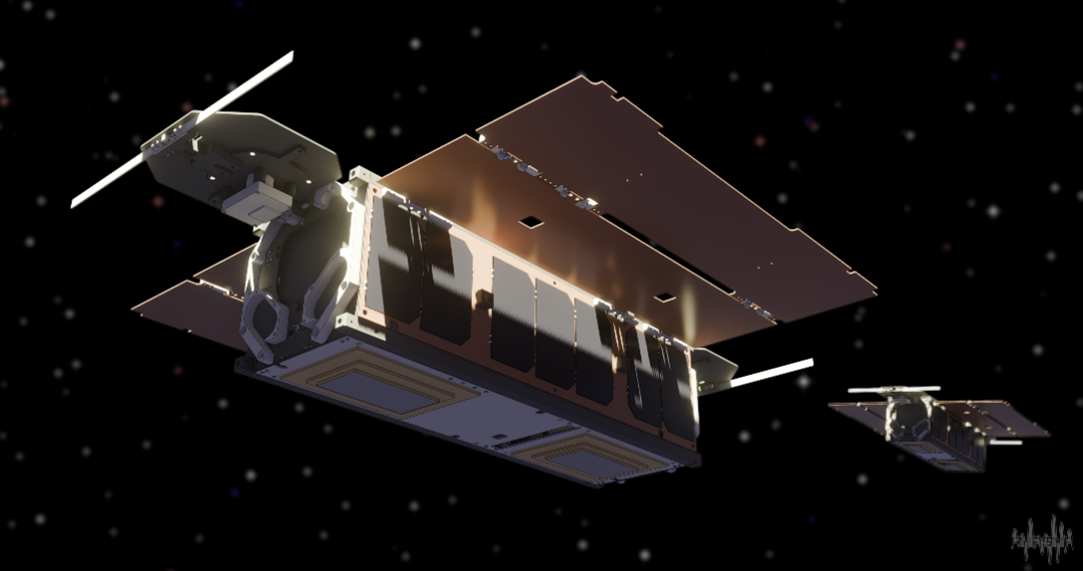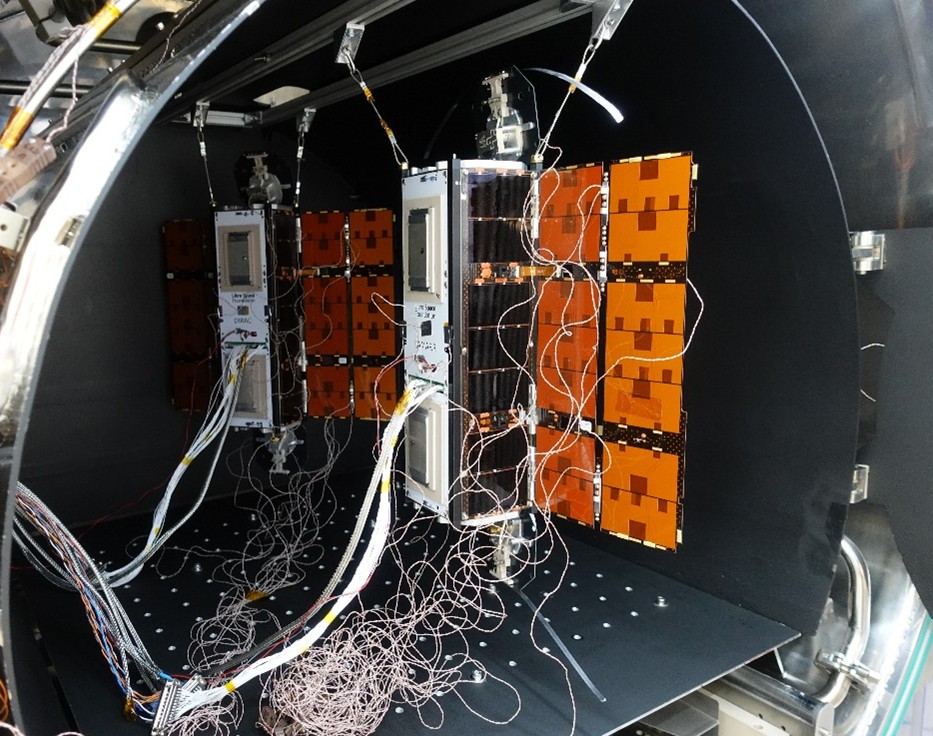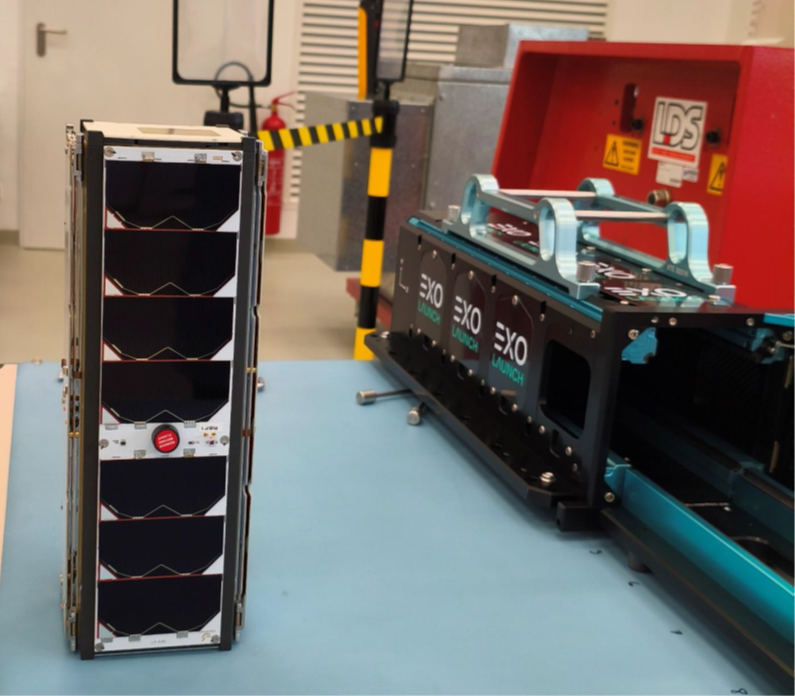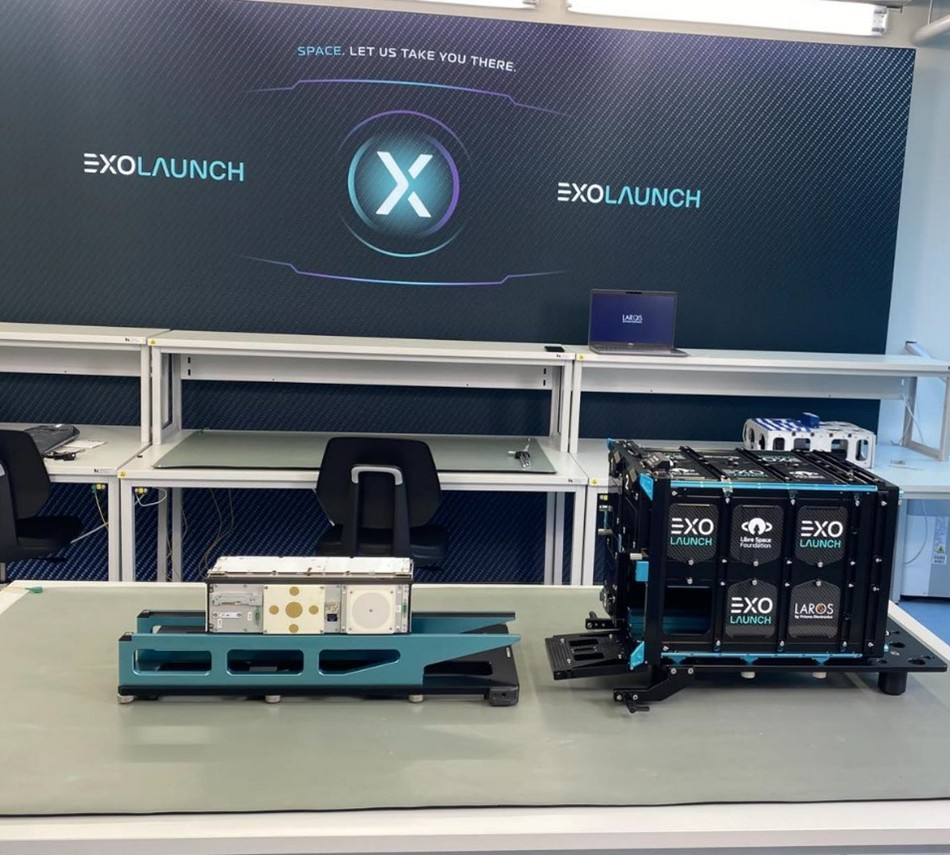Three further ESA-supported Greek CubeSats ready for launch

The next batch of the Greek In-Orbit Demonstration (IOD)/ In-Orbit Validation (IOV) CubeSat missions – developed with support from the European Space Agency (ESA) – is ready for launch in November this year. Having successfully completed functional and environmental testing, the two PHASMA mission spacecraft, LAMARR and DIRAC, developed by the Libre Space Foundation, and the PRISMA Electronics-developed MICE-1, have been delivered to the launch service provider ExoLaunch, ready for launch with the SpaceX Transporter-15 rideshare mission.
The PHASMA mission, developed by the Libre Space Foundation, utilises two identical 3U CubeSat platforms, LAMARR and DIRAC, flying in close proximity for radio frequency (RF) signal detection and monitoring from sources either in space, or on the ground.
Each of the PHASMA platforms hosts a SatNOGS-COMMS transceiver and payload antenna, which will be used to detect RF transmissions in Ultra-High Frequency (UHF) and S-band. The GPS location of each platform, together with the measurements and signal artifacts from the payloads will be transmitted to ground for post processing to determine the location or orbit of the terrestrial or space-based source.
"The PHASMA mission focuses on the design and development of two open-source CubeSats dedicated to monitoring and analysing the electromagnetic spectrum in space. The PHASMA CubeSats will conduct a series of advanced experiments, utilising artificial intelligence to monitor terrestrial radio frequency transmissions, quantify global spectrum usage and identify sources of interference or potential violations. Finally, the signals analysis from other satellites will enhance the satellite identification and tracking, thereby contributing to improved Space Situational Awareness (SSA). Through this project, Libre Space Foundation aims to further develop and promote open-source space technologies, while also reinforcing Greece’s strategic role in the global open-source space ecosystem,” said Manthos Papamatthaiou, Chairman of the Libre Space Foundation.

The Maritime Identification and Communication systEm – 1 (MICE-1), developed by Prisma Electronics S.A. with the support of the Democritus University of Thrace, is a 3U CubeSat that will be used to develop and enhance maritime tracking activities in the Mediterranean Sea.
The primary payload consists of an antenna and receiver for the reception, storage and downlinking of Automated Identification System (AIS) signals, broadcast by ships and other maritime assets.
The secondary payload enables Software Defined Radio communication between Internet of Things (IoT) devices connected with a nanosatellite for data packet exchange from sensors, instruments and command control sub-systems on important assets like ships, as part of the Prisma developed LAROS system. LAROS is providing remote condition monitoring for diagnosis, prognosis and early warning for structural, environmental and energy footprint assessment of critical infrastructure.


"Prisma Electronics is proceeding with the launch of MICE-1, having already completed the design and implementation of the nanosatellite for IoT communications in shipping, contributing to a more sustainable planet, and is now one step away from its launch. This is a strategic investment in cutting-edge technologies that enhance the safety and sustainability of maritime transport, further strengthening LAROS, the integrated remote monitoring and sensor data analysis system developed by Prisma Electronics, which is already in use on hundreds of ships worldwide. MICE-1 is now fully ready for launch, marking the start of an ambitious plan to create a Greek constellation of nanosatellites. We are proud to be actively contributing to shaping the future of maritime communications and Greek space technology. We would like to thank ESA, the Ministry of Digital Governance, and our partners for their collaboration to date, and we are working on the next steps," said Christos Giordamlis, CEO of Prisma Electronics.
The three satellites are part of the seven IOD/IOV CubeSat projects developed under the project Cube Small-Satellites (Measure ID 16855), which is implemented by the Hellenic Ministry of Digital Governance with the ESA's assistance in the management and implementation. The project is part of the National Recovery and Resilience Plan ‘Greece 2.0’, which is funded by the Recovery and Resilience Facility (RRF), core programme of the European Union's NextGenerationEU.
“The PHASMA and MICE-1 are ready for launch, and it marks a significant milestone for Greece’s space sector. These missions reflect the successful collaboration between all stakeholders and the Agency, and demonstrate Greece’s growing capability in advanced satellite technology. With their forthcoming deployment, PHASMA and MICE-1 will contribute to Europe’s space innovation ecosystem and strengthen Greece’s presence in the global space community,” said Frédéric Rouesnel, Greek Connectivity RRF Project Manager at ESA.
Prof. Konstantinos Karantzalos, Secretary General at the Ministry of Digital Governance, said: " Following the successful launch of the first Greek CubeSat under the National Microsatellite Programme, we are now entering the next important phase of this research-driven and technology demonstration-oriented initiative. The forthcoming launch of three additional CubeSats underlines the continuity and sustainability of our national effort to establish Greece as an active and reliable contributor in the space sector. We congratulate the Libre Space Foundation, Prisma Electronics, their partners and ESA for reaching this milestone and acknowledge the hard work that lies ahead to fully harness the operational potential of these missions. The National Microsatellite Programme is strengthening our country’s capabilities in critical areas such as civil protection, environmental monitoring and secure communications, while also fostering the growth of a vibrant domestic space ecosystem. Bringing together the country’s scientific, academic and industrial communities under Greece’s space strategy is essential to success, and we are proud to see this vision becoming reality."
These three CubeSats will soon join DUTHSat-2 in orbit. DUTHSat-2 was the first of the Greek IOD/IOV CubeSats, which launched on Transporter 14 on 23 June 2025. The remaining four Greek IOD/IOV CubeSat projects, resulting in seven more CubeSats, have begun assembly and testing, and are expected to launch in February 2026 via the Transporter 16 rideshare launch aboard a SpaceX Falcon 9 launcher.


